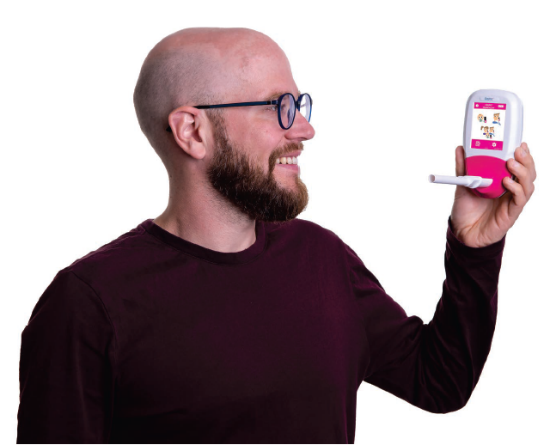


The Hydrogen Breath Test is a simple, non-invasive test used to check how well your body digests certain sugars like lactose, fructose, or to detect bacterial overgrowth in your intestines.
It helps diagnose problems like:
• Small Intestinal Bacterial Overgrowth (SIBO)
Lactose intolerance (milk sugar malabsorption)
• Fructose or sorbitol intolerance
• Other carbohydrate malabsorptions
You may need this test if you have:
• Bloating
• Excess gas
Diarrhea
• Abdominal pain
• Belching
• Feeling full quickly
These symptoms may be due to improper digestion of sugars or excess bacteria in your small intestine.
1. Bacteria in your gut produce hydrogen gas when they ferment undigested food.
2. This gas is absorbed into your blood and breathed out through your lungs.
3. The test measures the amount of hydrogen in your breath after drinking a sugar solution.
If the gas levels are high, it suggests malabsorption or bacterial overgrowth.
• You will first blow into a small mouthpiece connected to a machine to get a baseline reading.
• Then, you will drink a sugar solution (like lactose or glucose), depending on what your doctor is testing for.
• After that, you will blow into the machine every 15–30 minutes for the next 2 to 3 hours.
The machine will analyze your breath for hydrogen and methane gas levels.
To get accurate results, follow these instructions:
1 day before the test:
• Eat a low-fiber, low-carb diet (white rice, eggs, chicken, plain bread)
• Avoid high-fiber foods, beans, fruits, milk, sweets, and carbonated drinks
12 hours before the test:
• Fast overnight (no food or drink except plain water)
• No smoking, chewing gum before the test
• The test is safe, painless, and non-invasive
• You may feel some bloating or gas during the test — this is normal
• The test helps doctors decide if you need dietary changes, antibiotics, or enzyme therapy
sanghamitragastroenterology@gmail.com
KGH: Pentakota Complex, Maharanipeta
MVP: MIG-55, Sector 5, MVP Colony